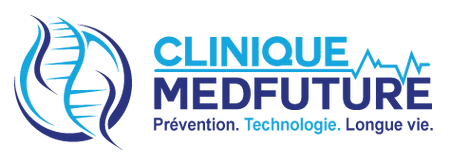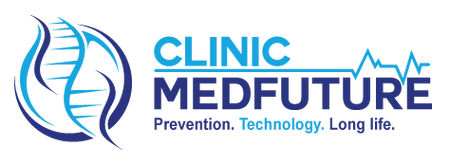Part 3: The 9 causes of aging - Epigenetics

Now that we've covered DNA degradation and telomere shortening , it's time to address a third identified cause of aging: epigenetics, and in particular, epigenetic modifications.
Epigenetics – Definition
But first, what is epigenetics? We all know genetics well, the science which is interested in DNA, the information it contains and the alterations of this information via mutations within genes. Epigenetics is interested in all the mechanisms that will allow the expression of genes and how these genes will be used without modifying our DNA sequences. Epigenetics therefore highlights the variability of the expression of a gene depending on time and its environment. A simple way to understand the strength of epigenetics is to look at organs: each cell in your body contains the same genetic information, and yet, depending on their physicochemical environment, certain cells will give rise to neurons, skin cells or heart muscle cells. A good example of the power of epigenetics (you can find it on Wikipedia) is that of bees, a larva can become a queen or a worker which lives ten times less depending on how it is fed. This is a perfect example of the epigenetic phenomenon: the same information at the start for a different result.
This area is very interesting for understanding aging and we have identified 3 main modes of epigenetic action that can influence our lifespan: DNA methylation, histone modification and chromatin remodeling.
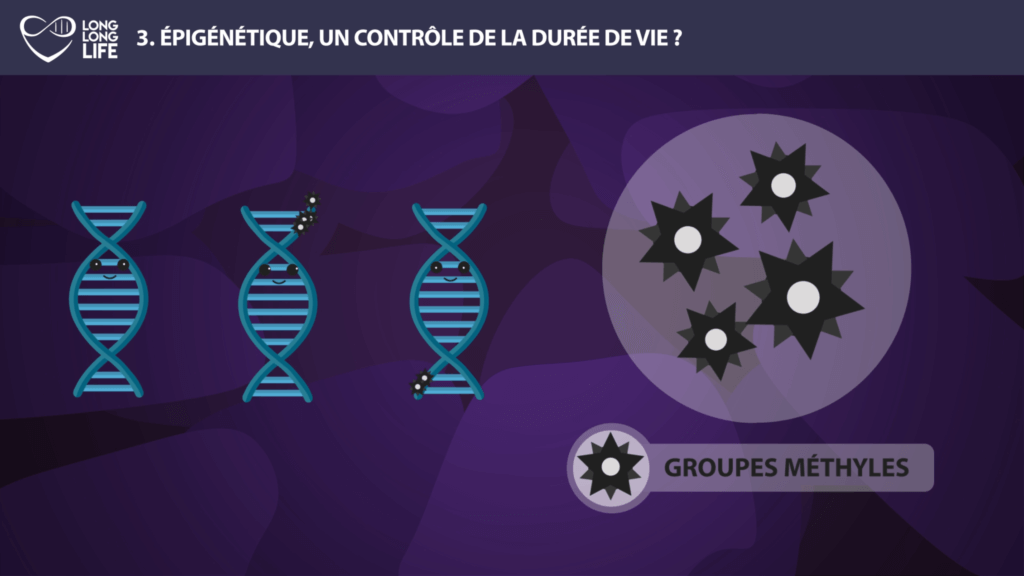
Epigenetics – Methylation
Methylation is an epigenetic phenomenon which will allow the addition or removal of a small molecule, called methyl, on certain parts of our DNA. These changes can alter the expression of a gene, increasing the production of one protein or decreasing the synthesis of another. This methylation can affect many genes with a more or less important role depending on the role of the affected gene. Over time, epigenetic modifications linked to methylation increase and this could be the indirect cause of problems, such as increased cholesterol levels or cardiovascular risks.
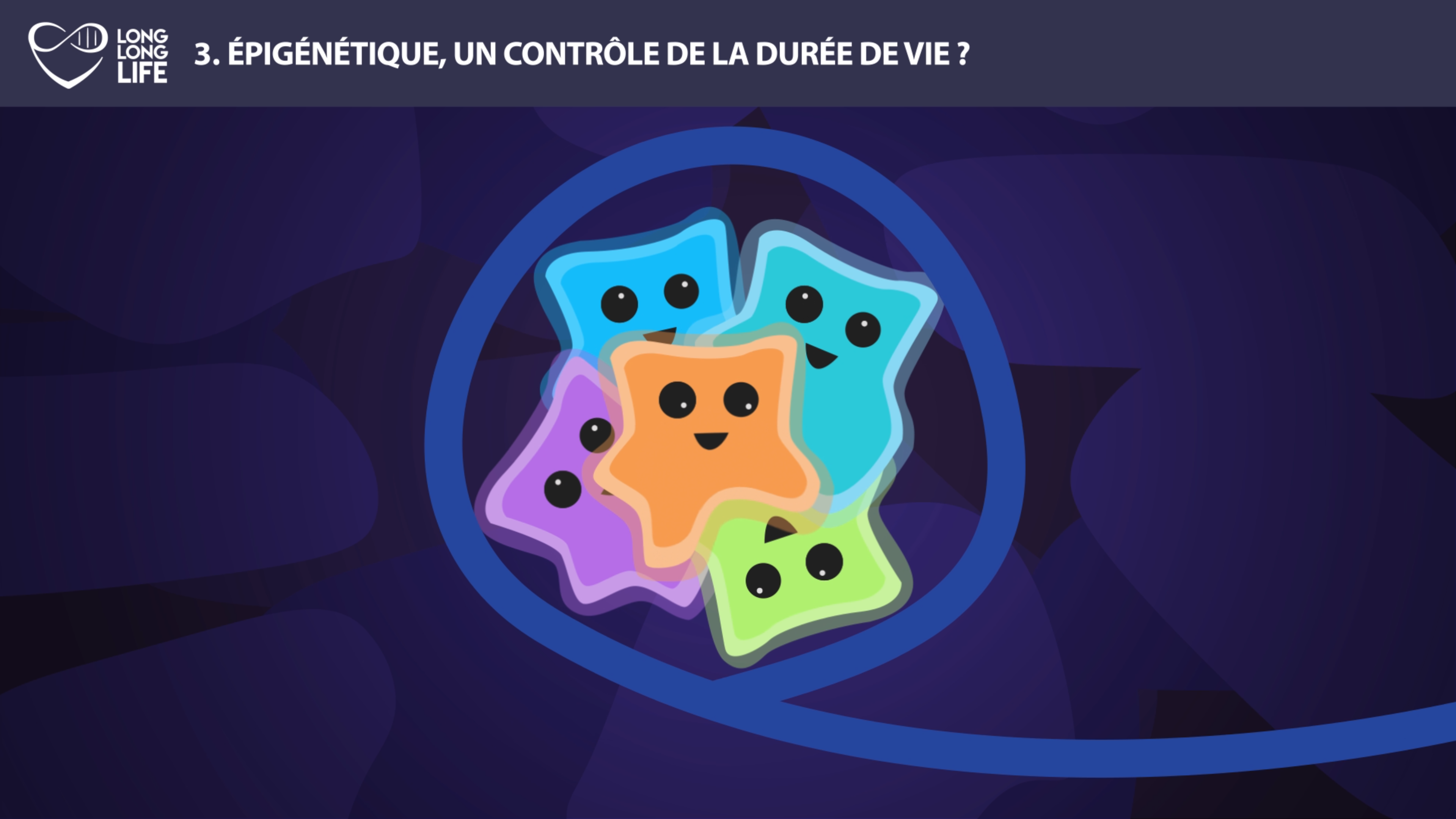
Epigenetics – Histones
And it’s the same for histones! Histones are the proteins around which DNA wraps, to make up the chromosomes, the famous curler. Just like DNA, these histones can be modified with the addition or removal of small molecules . This time, it is the acetyls (and no longer the methyls) that are of particular interest to us: in invertebrates, we observed that the deletion of these acetyls on a specific histone could increase their life expectancy. These modifications can therefore have a significant effect on the organism and are capable of modifying the expression of a gene.
Epigenetics – Chromatin
Now it’s the turn of chromatin. Chromatin is the form in which DNA is presented in the nucleus. It allows the packaging of DNA to store the maximum amount of information in tiny spaces. This accumulation takes place in particular thanks to the histones which we have just talked about. But chromatin can also be remodeled, that is to say it will be more or less condensed. In its very condensed form, it will be called heterochromatin and in its less dense form, it will be called euchromatin. With age, chromatin remodeling decreases, the balance between heterochromatin and euchromatin is no longer respected and this affects not only chromosome stability, but also gene expression. Moreover, studies have shown that chromatin regulation is an important factor in controlling telomere length. Thus this epigenetic alteration can lead to accelerated aging through the shrinkage of telomeres.
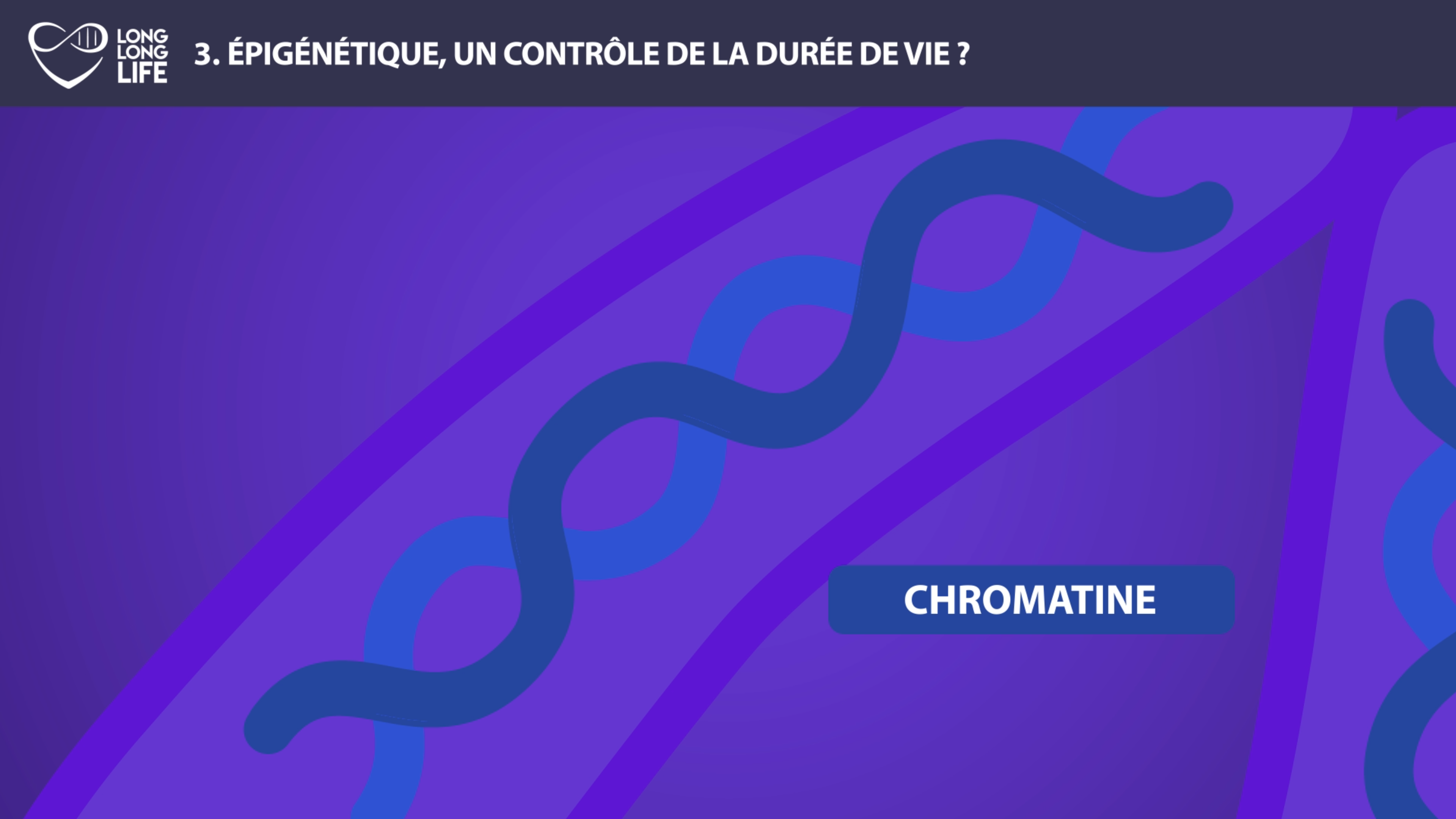
In summary, the study of epigenetic alterations is at the heart of research on aging. DNA methylation, histone modification and chromatin remodeling are processes that are altered over time and have been shown to be linked to commonly age-related diseases such as cancer, atherosclerosis and dementia.
SOURCES:
Dr. Guilhem Velvé Casquillas on http://www.longlonglife.org/
